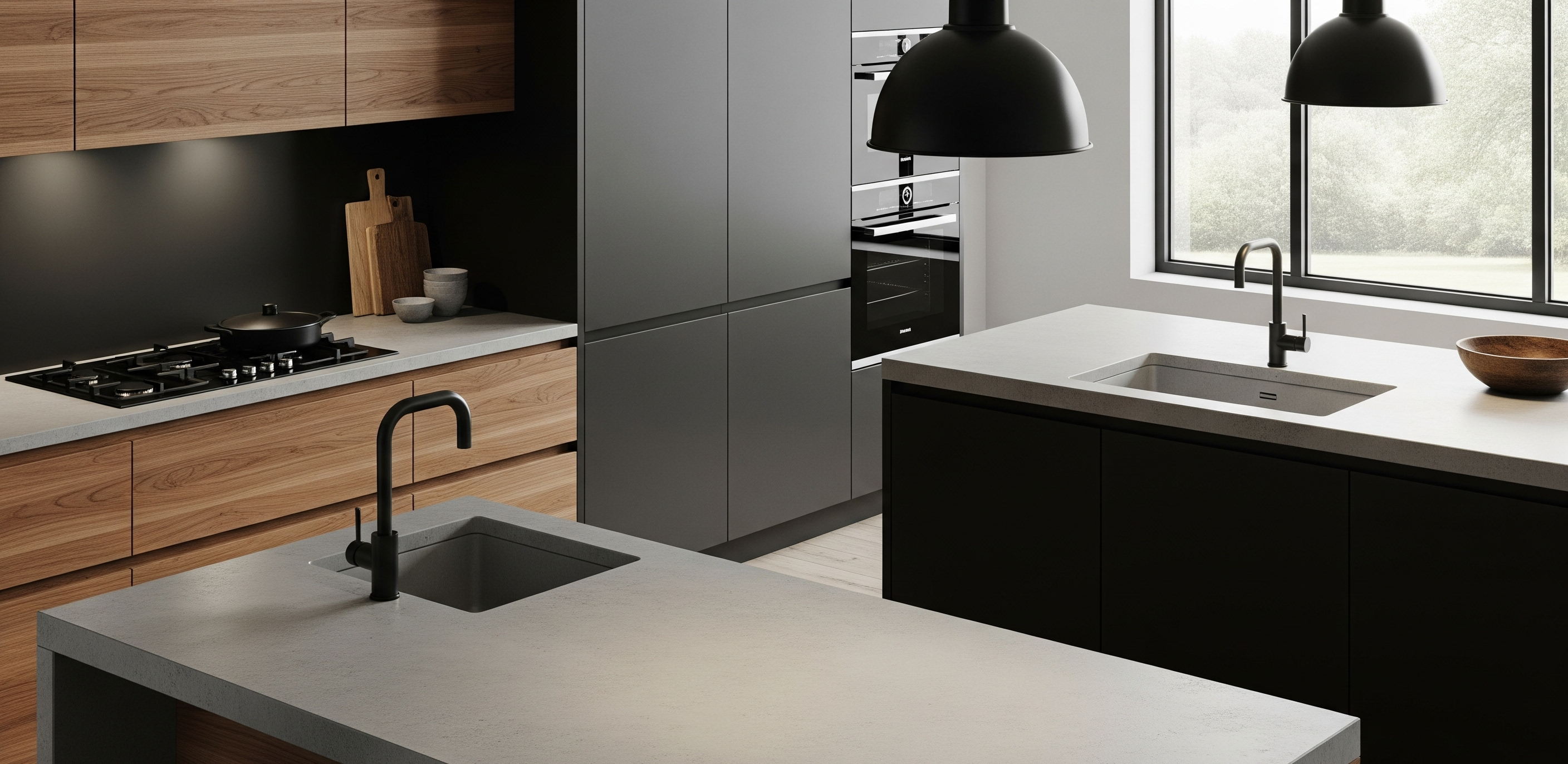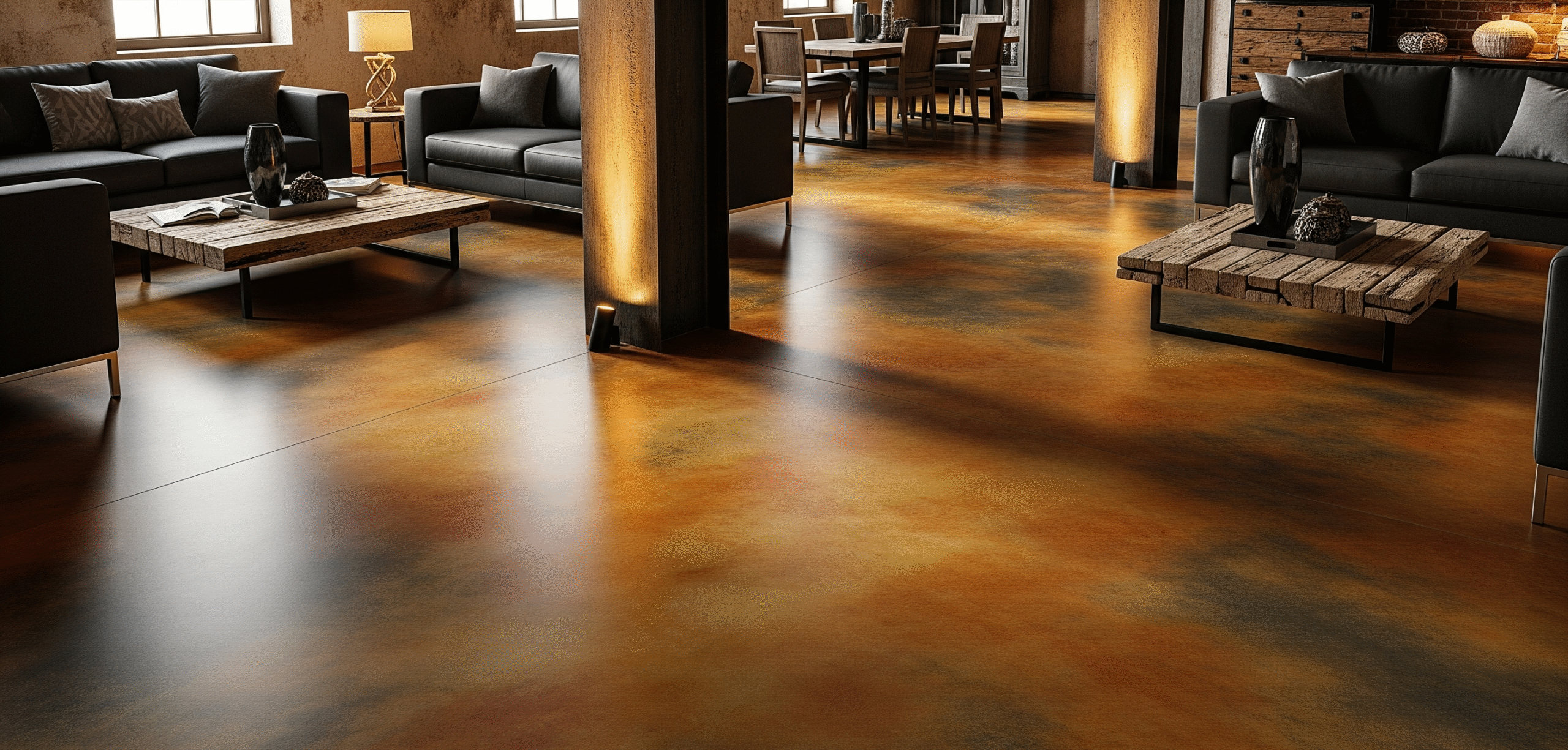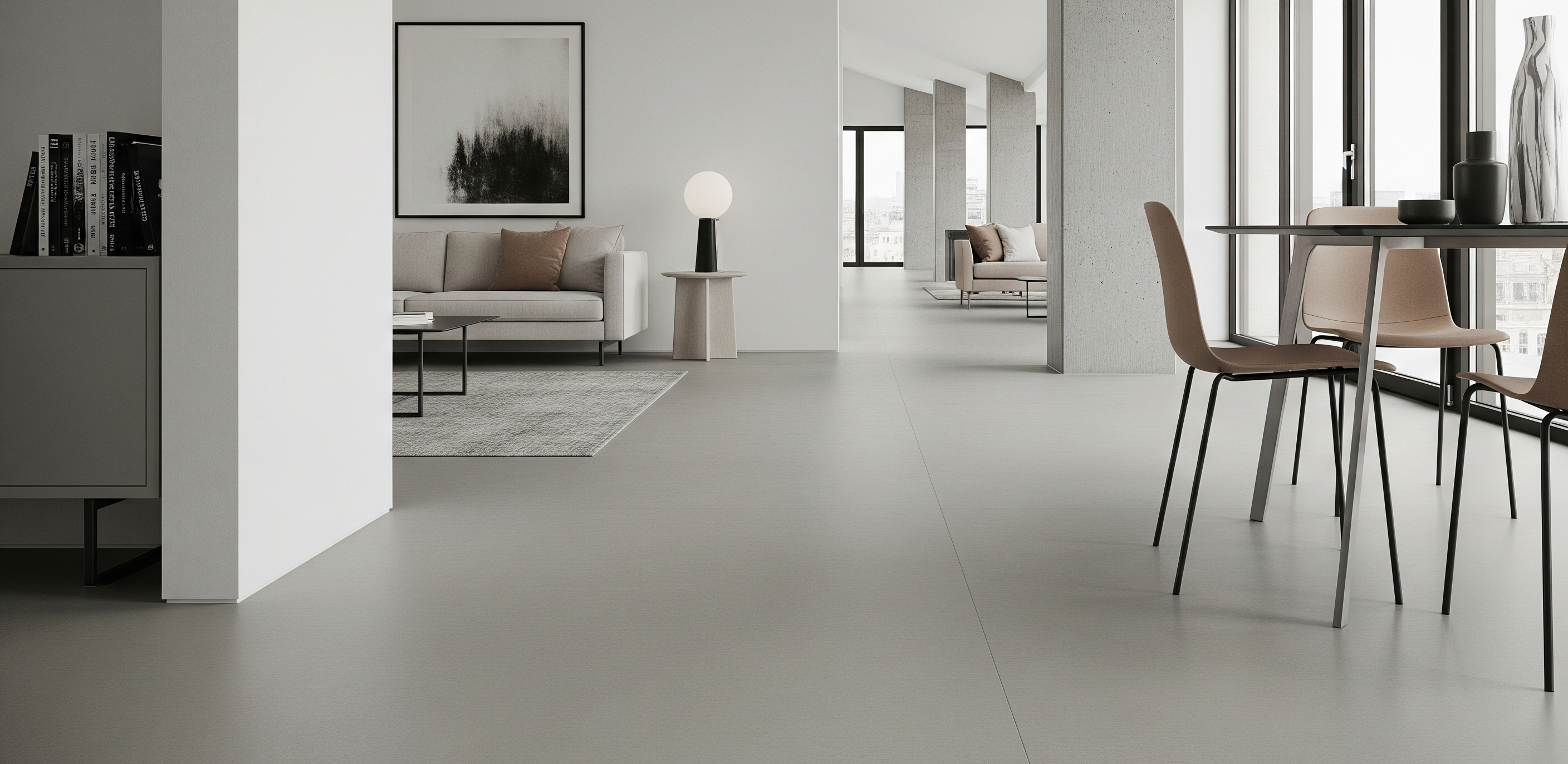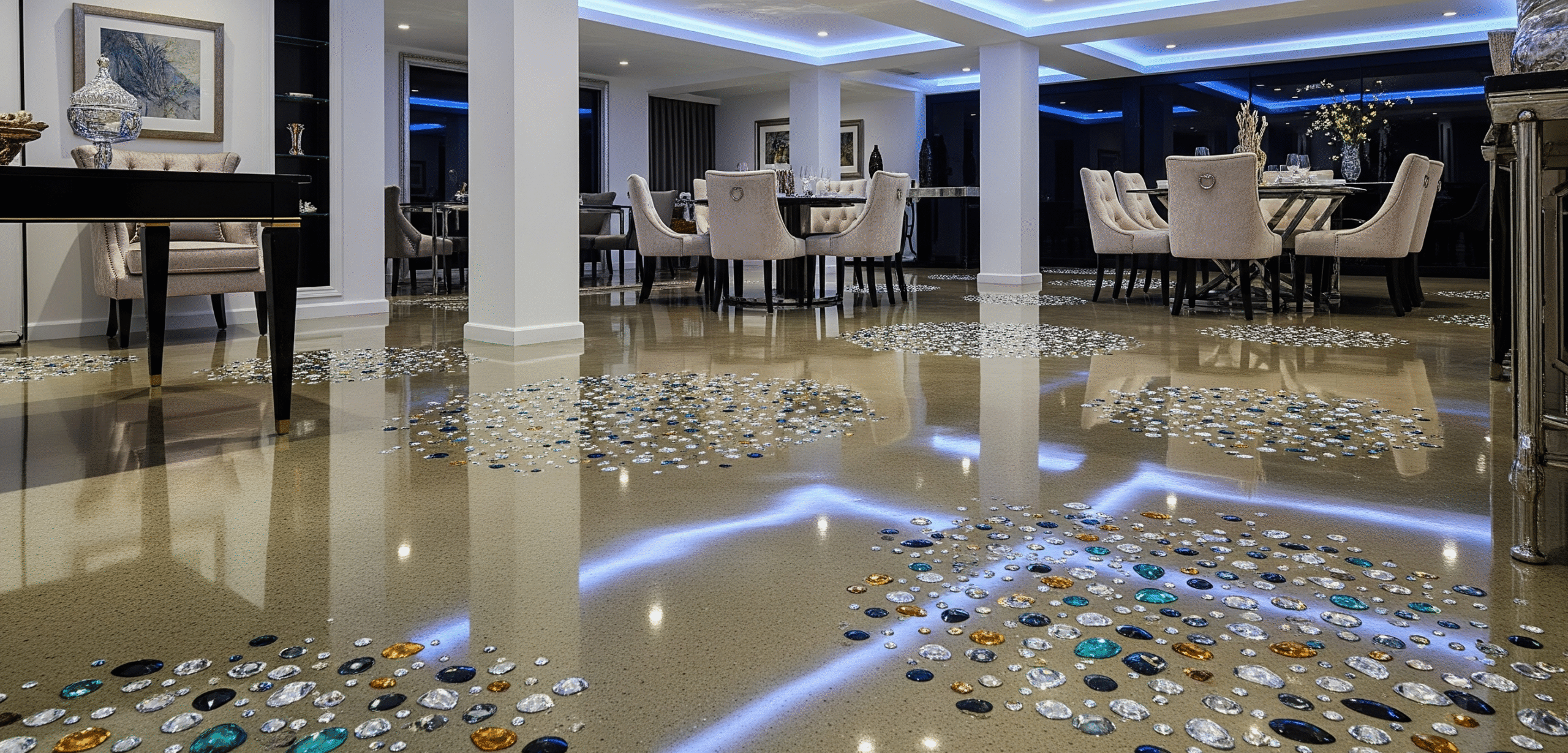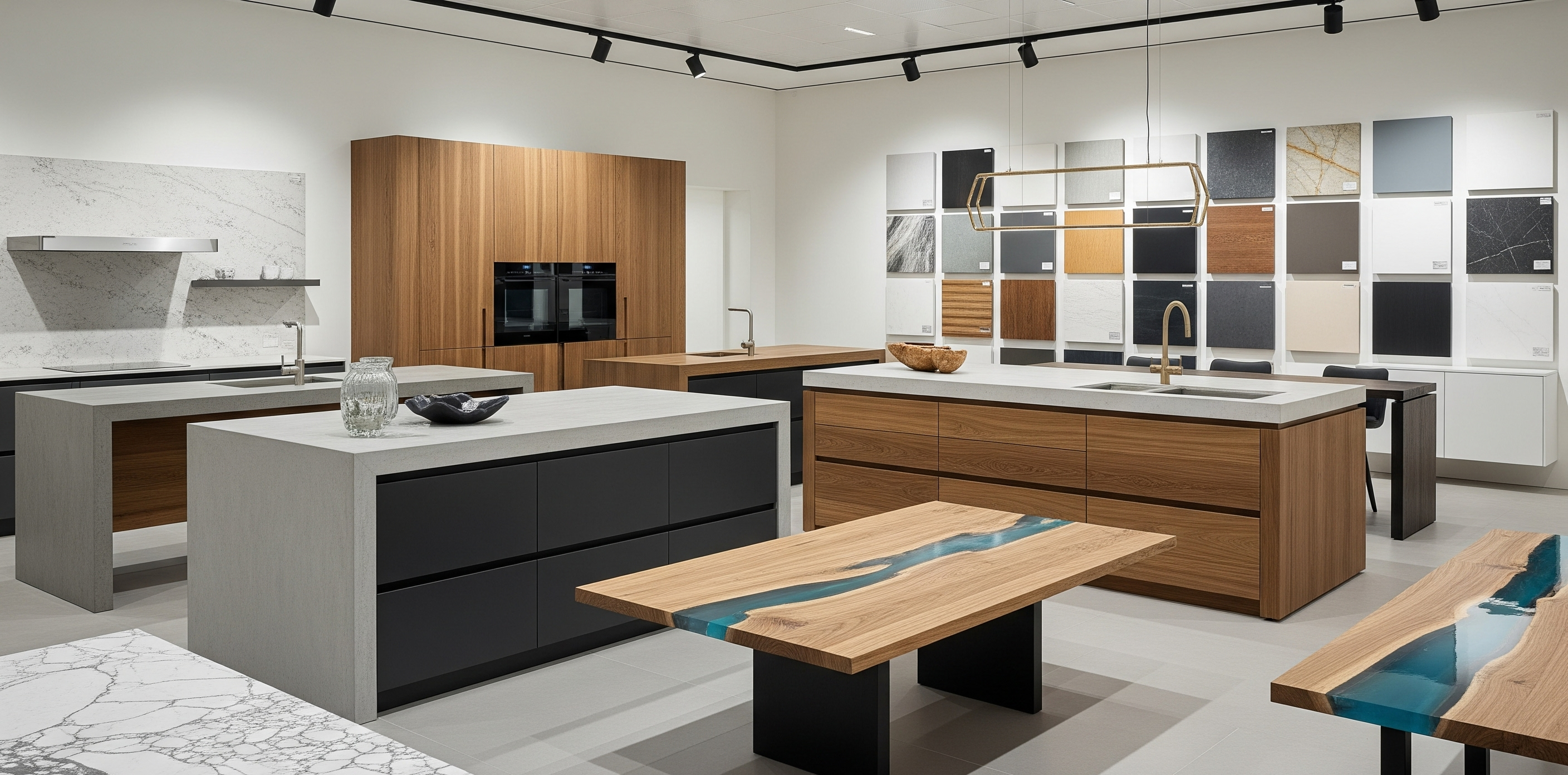Did you know that concrete has been used in construction for over 2000 years? Yes, you read that right! Dating back to ancient Rome, concrete has stood the test of time as a reliable and versatile building material. But what may surprise you is the recent surgency in the world of interior design, particularly in the realm of kitchen countertops. Today, concrete countertops are not only admired for their durability but also celebrated for their sleek, modern aesthetic. So, if you are looking to add aa touch of timeless elegance to your kitchen, why not consider the enduring appeal of concrete? Join us as we delve into the world of concrete countertops, exploring their various types, pros and cons, maintenance tips, and how to find the right contractor to bring your vision to life. Let us uncover the beauty and practicality of concrete countertops together!
WHAT ARE CONCRETE COUNTERTOPS?
Concrete countertops are exactly what they sound like – countertops made from concrete! But don’t let the simplicity of the material fool you. Concrete countertops can be crafted into a wide array of shapes, sizes, and design, making them highly customizable to suit your kitchen’s aesthetic.
PROS OF CONCERTE COUNTERTOPS
Versatility: Concrete Countertops can be customized to fit any shape or size, allowing for unique designs tailored to your preferences.
Durability: When properly sealed and maintained, concrete countertops are incredibly durable, resistant to scratches, stains, and heat.
Aesthetic Appeal: With a wide range of colors, finishes, and textures available, concrete countertops can complement aby kitchen style, from modern to rustic.
CONS OF CONCRETE COUNTERTOPS
Prone to cracking: Despite their durability, concrete countertops can develop hairline cracks over time, especially if not properly installed or maintained.
Requires Sealing: To prevent staining and water damage, concrete countertops need to be sealed regularly, adding to their maintenance requirements.
Heavy: Concrete countertops are significantly heavier than traditional materials like granite or laminate, requiring sturdy support structures.
MAINTAINING CONCRETE COUNTERTOPS
Maintaining your concrete countertops doesn’t have to be a difficult task. Here are some tips to keep them looking their best:
Sealing: Regularly seal your countertops with a high-quality sealant to protect against stains and moisture penetration.
Cleaning: Wipe spills promptly and clean the surface with a mild soap and water solution. Avoid abrasive cleaners that could damage the sealant.
Avoid Heat damage: While concrete is heating resistant, prolonged exposure to high temperatures can cause discoloration or damage to the sealant.
HOW TO HIRE THE RIGHT CONCRETE COUNTERTOP CONTRACTOR
Choosing the right contractor is crucial to ensuring your concrete countertops are installed correctly and to your satisfaction. Here are a few tips to help you find the perfect match:
Do your research: Look for contractors with experience in concrete countertop installations. Check online reviews and ask for references from past clients.
Ask Questions: Don’t be afraid to ask about the contractor’s process, materials used, and timelines for the project. Clear communication is key to a successful partnership.
Get multiple quotes: Shop around and compare quotes from multiple contractors to ensure you are getting a fair price for the quality of work.
Check credentials: Make sure the contractor is licensed, insured, and bonded to protect yourself and your investment.
Concrete countertops offer a unique blend of beauty and resilience, making them a popular choice for homeowners looking to elevate their kitchen space. With proper care and maintenance, these versatile surfaces can withstand the test of time while adding a touch of modern elegance to any home. So why wait? Explore the possibilities of concrete countertops and redefine your kitchen aesthetic today!
Ready to transform your space with stylish and durable concrete countertops? Contact Us at SDS today to learn more about our concrete countertop services and schedule a consultation. Let us turn your kitchen dreams into reality!
